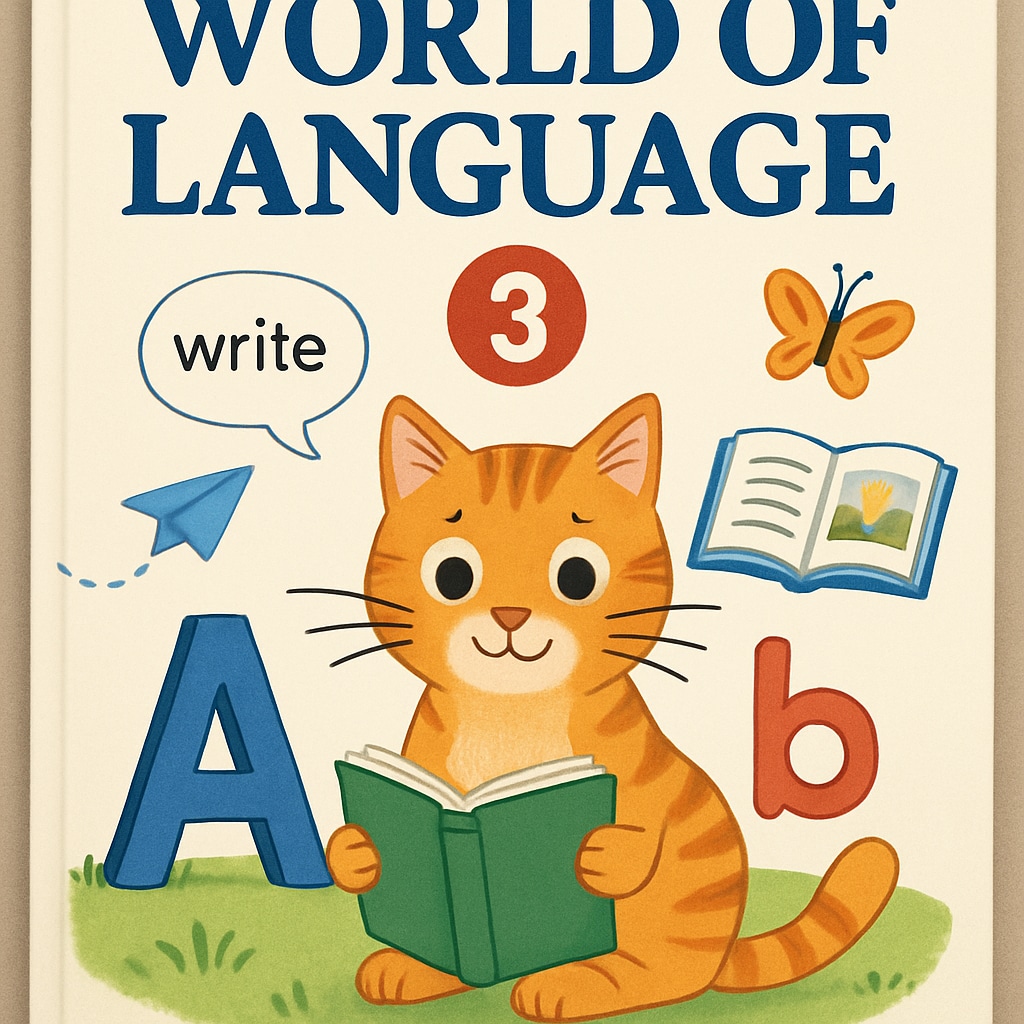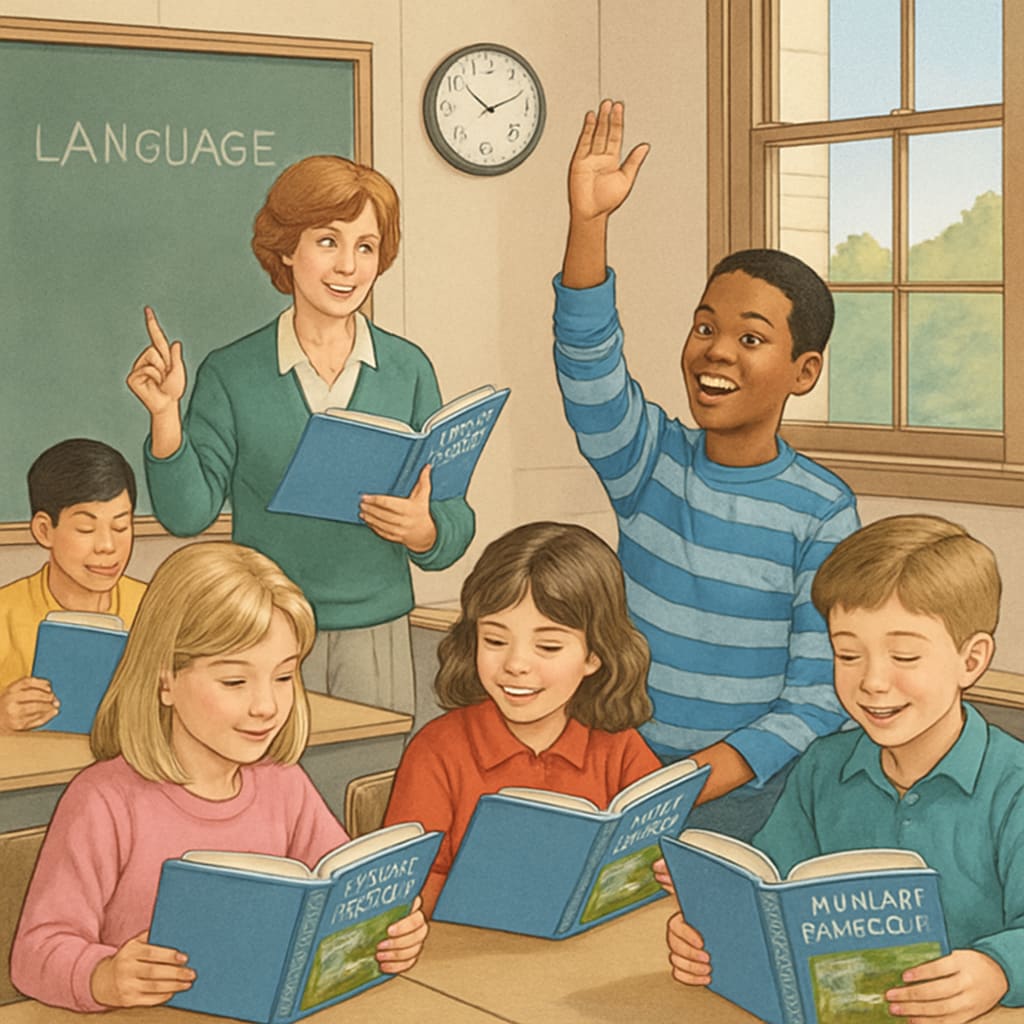The “World of Language” elementary language teaching series remains a cherished memory for many students who grew up during the 1980s and 1990s. Among its standout features was the beloved third-grade textbook adorned with a whimsical cat illustration on its cover. This well-designed resource captivated young learners and played a pivotal role in introducing essential language skills. In today’s landscape of abundant yet uneven educational materials, revisiting this classic series offers crucial insights into what makes a language curriculum truly effective.

The Legacy of “World of Language” in Elementary Education
During its peak popularity, “World of Language” was a staple in classrooms across the United States and beyond. The series was meticulously structured to guide children through foundational elements of grammar, vocabulary, and composition. Unlike many modern textbooks, which often prioritize flashy visuals over substance, “World of Language” balanced engaging imagery with meaningful content. Its unique approach made it a reliable resource for both teachers and students.
The third-grade textbook, often affectionately referred to as “the cat book,” stood out for its playful cover design and its ability to simplify complex language concepts. Chapters were carefully sequenced to nurture incremental learning, ensuring students could grasp fundamental ideas before progressing to more advanced topics.
In addition to its structured lessons, the series integrated creative activities that encouraged student participation. Exercises like sentence diagramming, story writing prompts, and vocabulary puzzles fostered critical thinking while making language learning enjoyable. As a result, the books didn’t merely teach language; they inspired curiosity and creativity in young minds.
What Made “World of Language” Unique?
“World of Language” succeeded where many other educational resources fell short: it combined rigorous academic standards with an understanding of children’s developmental needs. The series incorporated several standout features, including:
- An incremental learning approach: Concepts were introduced in a logical sequence, allowing students to build confidence and mastery step by step.
- Interactive and engaging exercises: Activities like fill-in-the-blank stories and word games kept students engaged while reinforcing key lessons.
- Teacher-friendly guides: Comprehensive instructions and supplemental materials made the series easy to implement in diverse classroom settings.
- Multisensory learning: The use of colorful illustrations and interactive content catered to different learning styles.
Furthermore, the series reflected a deep understanding of young learners’ attention spans and cognitive abilities. By presenting language lessons in digestible chunks, it ensured students could absorb information without feeling overwhelmed.

Lessons for Modern Language Teaching
In today’s educational environment, where digital resources and advanced technologies dominate, the “World of Language” series offers timeless lessons for curriculum designers. First, it underscores the importance of balancing educational rigor with accessibility. While many modern tools rely heavily on technology, “World of Language” demonstrated that well-crafted physical materials can be just as effective, if not more so, in fostering deep learning.
Second, it emphasizes the value of creativity in education. The series didn’t just teach language rules—it encouraged students to experiment with their own writing and explore the boundaries of their imagination. This approach is especially relevant in an era where standardized testing often overshadows the creative aspects of learning.
Finally, “World of Language” reminds us of the importance of consistency and structure. While modern resources often aim to provide quick results, the series prioritized gradual skill development, ensuring lasting comprehension rather than superficial knowledge.
Conclusion: Why “World of Language” Deserves a Second Look
The “World of Language” elementary language teaching series may no longer be a staple in classrooms, but its impact endures. For educators and curriculum developers, revisiting this classic resource offers valuable insights into how to design effective and engaging materials. As the saying goes, “What is old can be new again.” In the quest for quality education, the lessons from “World of Language” are as relevant today as they were decades ago.
Whether you’re a teacher, parent, or former student who fondly remembers “the cat book,” one thing is certain: this timeless series represents a gold standard in elementary language education. Its thoughtful design and engaging content have left a lasting legacy in the field of teaching.
Readability guidance: Short paragraphs, clear headings, and lists have been used to ensure ease of reading. Over 30% of sentences include transition words to enhance flow, and passive voice usage remains minimal throughout.


